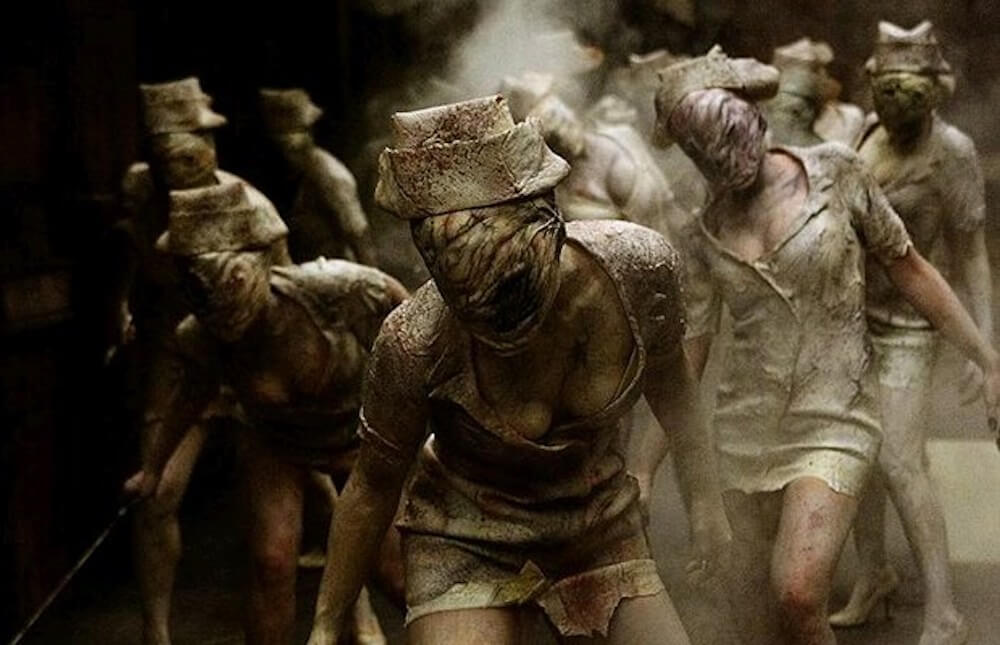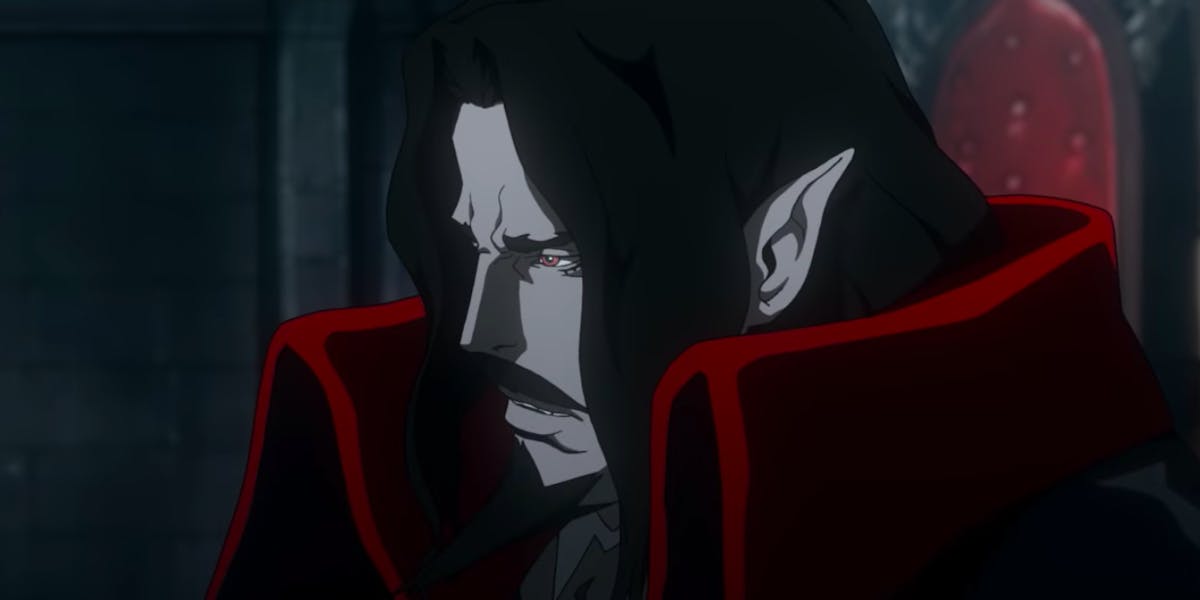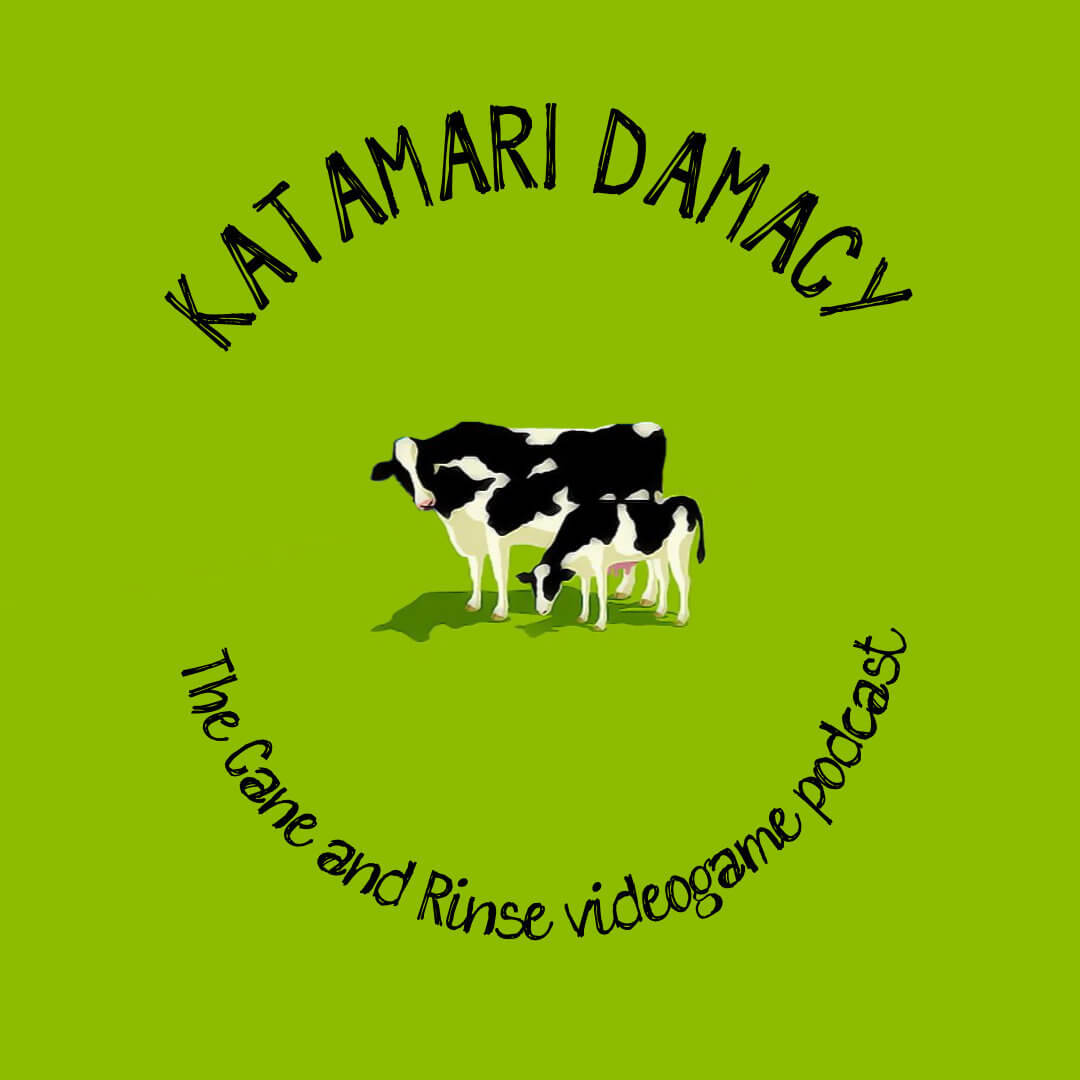Joshua Garrity offers us his opinion as to why Netflix’s first two seasons of Castlevania are so great.
Previous to this latest offering from Netflix, my favourite videogame adaptation was probably the first Silent Hill movie, directed by Christophe Gans and released in 2006.
I still don’t think it’s particularly good, it just gets a lot of brownie points for completely nailing the aesthetic of Silent Hill 2 (if not the thematic symbolism of those aesthetics). Nothing else about it reaches the same heights as the way it looks and sounds, but those elements aren’t bad enough to sink the movie either. It’s a totally watchable, middle of the road horror movie.

After that you have Final Fantasy: Spirits Within, which is a kind of decent sci-fi movie, but bares so little in common with the series its adapting that I hesitate to even consider it a Final Fantasy movie.
I’ll also admit to enjoying Final Fantasy VII: Advent Children, which is a film so in love with its source material that it becomes a convoluted, masturbatory mess designed only as a vessel to contain as much fan service as its 1 hour 41 minute runtime will allow…
However, I’m human, and I love Final Fantasy VII, so I still extract some excitement from seeing Cloud walk and talk in a movie, even a fairly rubbish one.
Paul WS Anderson’s Mortal Kombat is silly fun I guess, and Street Fighter is so terrible it loops back around to become entertaining again. Every other videogame adaptation I’ve seen has been a waste of my precious hours on Earth.

That very long-winded intro was to establish something you’ll likely already know. Generally speaking, videogame adaptations have not been well loved. Even the examples people like me point to and say, “that wasn’t a failure!” we wouldn’t really consider to be truly great.
The Castlevania TV series developed by Adi Shankar and written by Warren Ellis is, for my money, the first truly great videogame adaptation.

Castlevania is set in the country of Wallachia around 1476, after Dracula has unleashed his night hordes upon the land to slaughter every human they can find in revenge for burning his wife Lisa at the stake, who was falsely accused of witchcraft by the Church.
The series draws influence from games such as Symphony of the Night and even Curse of Darkness, but primarily Castlevania III: Dracula’s Curse, casting vampire hunter Trevor Belmont, speaker magician Sypha Belnades and Dracula’s son Alucard as the protagonists of the story. (poor Grant Danasty)
I’m not interested in any gatekeeping of the term ‘Anime’, but I’m aware that everyone referring to Castlevania as anime may cause some confusion that I want to clear up.
This show is not Japanese in origin or even a calibration between Western writers and Eastern animators, as is the case with Nickelodeon’s The Legend of Korra.
Powerhouse Animation Studios is in fact based in Austin, Texas. Whether that means this show is still anime or not is up to you, but again, I’m not interested in that debate. What is not in doubt, is how much the show owes to Japanese animation and more specifically Ayami Kojima’s art direction on the Castlevania series.
If there is anything that remotely approaches fan service in this series, it’s the way it looks and feels. The animation doesn’t quite have the same level of detail as Kojima’s illustrations, but it still manages to evoke that gothic style while making the necessary changes so it can work in motion. So Alucard’s coat may be less extravagant, but it’s still clearly the Alucard we know and love from Symphony of the Night.
In addition to this, the series smartly takes influence from work that inspired a number of the games in the first place. Those familiar with the manga Berserk will have noticed that the demons tearing through Wallachia are depicted with the same ravening, blood-soaked horror as the Apostles are in Kentaro Miura’s long running series.
The 2D games could only really nod to Berserk, like with the inclusion of the “Dragon Slaying” sword Ascalon in Aria of Sorrow, which looks an awful lot like Berserk protagonist Guts’ favourite blade.
Given that manga shares more structurally in common with televised animation than videogames, it makes sense for the creators of this show to look at those influences again and instead evoke the atmosphere and tone of that work, instead of merely making reference. This is one of those extra steps that elevate this work. They’re not relying on the games to be the sole pool of influence and instead looking for those branches leading off of them that have equal value in informing an adaptation.
Judged on the curve of western televised animation, this an incredible looking show and one that I hope kick starts renewed interest in 2D animation in the West.
Castlevania fully commits to a gothic, hyper real vision of medieval Europe, with the full spectrum of reds and blacks serving as the primary colour scheme. There are many scenes where a single source of light is used to reveal detail in an otherwise dark frame. Sure, it pulls the usual trick that even Japanese televised anime pulls, where not all scenes are animated equally. Scenes of character’s simply talking aren’t as lavish and expensive as the action scenes. But when those action set pieces kick off, while I don’t think they match the creativity of the choreography in something like The Legend of Korra, the sheer visual splendour is a joy to soak in. Look at this below.

The use of colour and lighting, the dynamic choice of angles and character poses, and the fluidity in which hair and clothing flaps in the air. It’s all really top tier for me.
So we’ve established Castlevania looks great. So far that brings it on par with the Silent Hill movie I mentioned earlier. Honestly, that’s about all I was expecting from this. But what Castlevania does with its characters and narrative is what puts it a cut above.
A lot of videogame adaptations will often use the lore that fans are familiar with to simply create moments of pandering. A simple story filled with ‘remember this?’ and ‘remember that?’ asides, that don’t serve the plot or the characters.
Castlevania takes the lore fans are familiar with and treats it like a jumbled-up skeleton they can piece together to create something new. ‘We know from Symphony of the Night that Alucard had a mother called Lisa who burned at the stake, why not use that as the catalyst for the events of Dracula’s Curse?’. ‘Curse of Darkness may not be a story fans are desperate to see, but maybe Hector and Isaac would be great tools for character growth and drama for our antagonist?’
With the skeleton put together, the writers flesh these ideas out and expand on them organically and write new material based on the conclusions characters may come to going through these events.
And from this process comes the show’s greatest success, Dracula. In the games old Vlad is to Castlevania what Ganon is to The Legend of Zelda. The ever returning big bad, that isn’t particularly deep, but has an iconic look and demeanour that makes for a great and memorable final boss fight. The character as depicted in the show is essentially completely different and far more nuanced, but they built him using pieces the games gave them.

Dracula’s successful depiction here, weirdly made me think a lot about some failings of Thanos’ depiction in Avengers: Infinity War. The writers of that film wanted to make Thanos a more sympathetic villain, but had to square that with the genocide he wants to commit as part of the famous arc in the comics. They fell into the trap of thinking that in order for the audience to sympathise, the villain’s motive had to make logical sense. So they turned Thanos into a Malthusian figure. He wants to kill half of all life in order to preserve resources and ultimately preserve life. “He’s kind of got a point, right?” No, because anyone who knows anything about population growth would understand that within 50 years the measure Thanos took would be undone and starvation has more to do with global power structures than lack of food… plus, my dude, just make infinite resources. So this attempt to make a monster more understandable, ends up making him seem even less relatable and kind of dumb.
What the writers of Castlevania understand is that a villain’s motive doesn’t have to make logical sense or be something we agree with, it just needs to feel emotionally honest. After Lisa’s death, Dracula gives up on everything and everyone. He doesn’t care if it’s fair or just to wipe out all humanity for a crime one group of cruel people enacted. You all stood by and let her die, so you can all die too. No-one could possibly agree with Dracula’s actions or his reasoning, but by gosh do I sympathise with that raw fury and bottomless sadness that inform all his choices in this show. He’s torn apart and thus he’s tearing the world apart in return. All of this is elevated by Graham McTavish’s superb vocal performance. The voice acting in general is pretty great, with Richard Armitage, James Callis and Alejandra Reynoso making for great sources of both comedy and pathos as the central leads. But make no mistake, Graham McTavish is the star of the show here and steals every scene he’s in. He manages the extraordinary task of being able to give Dracula the gravitas and threat he needs to be an intimidating presence, but also the fragility that allows us to view him as the tragic figure he is. It’s one hell of a balancing act and McTavish handles it brilliantly.
Now I’d be remiss to not mention that this show employs the old fridging trope. We get mere minutes to form an idea of who Lisa is or what her relationship with Dracula is before she’s burning at the stake and providing the antagonist with his motivation. It’s an element they lifted from the games, but to kill her so swiftly does still suck. I personally think they go some ways to making up for it in season 2, and Castlevania does have great female characters in Sypha and Carmilla, but if this still bothers you, I get it.
Amongst all this drama, I love that the show can still find the space to have a sense of humour. The back and forth between Alucard and Trevor at times felt like I was watching a rated R version of (and I’m aware I keep mentioning this show) The Legend of Korra. I make that comparison because both shows try to have most of the humour come from characters different quirks sparking off of each other, rather than stopping to have a “gag.” Thus, the humour fits in neatly with the drama without any weird tonal shifts.
Another thing I love and is something that’s much more prevalent in season 2 than 1. The show just slowing the hell down and sending some quality time getting to know everyone. Looking back, the protagonists of Castlevania don’t actually do an awful lot over the course of 5 of the 8 episodes in season 2, but that’s because the show spends so much time with the antagonists and supporting cast, making sure we have a fully formed picture of every single one of them before things properly kick off. I’m now just as invested in Carmilla, Hector and Isaac’s threads as any of the heroes, all because the show took the time to prioritise character over plot. This is what I call good writing, folks!

I believe that being a great, ‘faithful’ adaptation is not about strict adherence to the source, but rather soaking in the same ideas/media that informed the original to create something that accurately evokes the source, yet also has the bravery to carve out something different that feels just as vital and valid in its own right.
Thus, I believe Castlevania the animated series isn’t great because it’s faithful to the Castlevania videogames, it’s great because it uses what the creators loved about the games to make something new. Because of this, unlike so many videogame adaptations that I mentioned up top, Castlevania can exist separate and apart from the games and be celebrated in and of itself, instead of merely existing in their shadow.

















